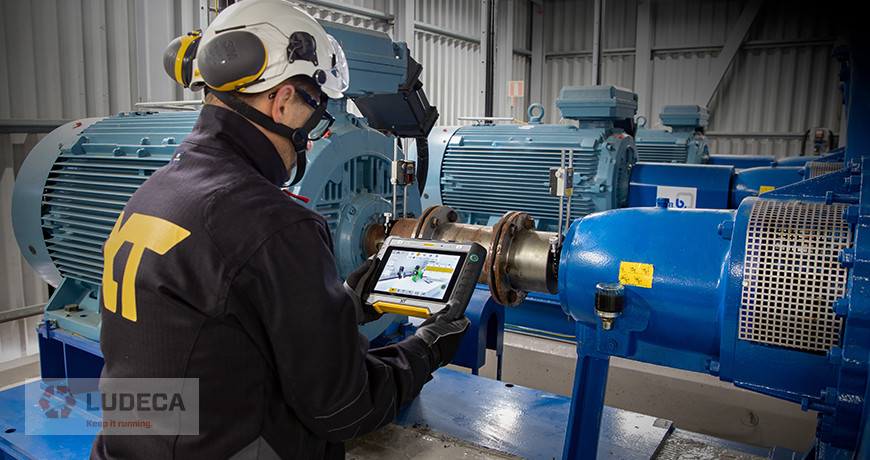
When purchasing a laser shaft alignment system, consider the following things to ensure you choose the most suitable and effective solution for your specific needs:
- Accuracy and Precision: Look for a laser shaft alignment system with high measurement accuracy and precision. The system should provide reliable and repeatable results for precise alignment adjustments.
- Ease of Use: Choose a laser shaft alignment tool such as the Easy-Laser XT-series that is user-friendly and easy to operate. Intuitive interfaces, built-in help, and straightforward procedures like LUDECA’s 5-Step Shaft Alignment Procedure contribute to efficient and error-free alignment processes.
- Versatility: Confirm that the alignment system is versatile and compatible with a diverse range of machinery types and sizes. A flexible system should adapt seamlessly to various measurement applications, including both horizontal and vertical installations. It should include checking for Soft Foot as well as compensating for thermal expansion of the machines (thermal growth).
- Durability and Build Quality: Assess the durability and build quality of the laser alignment system. It should be designed to withstand the conditions of industrial environments—ideally rated for both IP66 and IP67 water-, shock- and dustproof.
- Range and Reach: Consider the measurement range and reach of the system. Ensure it can cover the distances and dimensions relevant to your specific machinery and application requirements. Preferably, it should have a distance measurement range of at least sixty feet to easily handle applications such as cooling tower fans and deep submersible pumps.
- Flexibility: Various applications may demand specific alignment measurement approaches. Having different measurement modes such as Continuous Sweep and Multipoint allows the system to adapt to the specific requirements of each application.
- Alignment Tolerances: Make sure the alignment system has a built-in tolerance check. The best laser alignment systems have built-in ANSI/ASA tolerances and perform their tolerance evaluation based on the condition displayed at the coupling and compare it to the standards for the operational speed of that machine. Even better systems allow you to use any alignment tolerances of your choice.
- Expandable: Choose an alignment tool that grows with your needs by offering the ability to add other measurement capabilities such as belt pulley alignment, vibration checks, straightness measurement, and flatness measurement.
- Reporting and Documentation: Look for a laser alignment system that generates comprehensive PDF reports containing alignment results, complete with photos and notes, and with the ability to email the report directly from the alignment computer. This detailed documentation serves as a valuable resource for maintenance records, ISO compliance, and quality assurance purposes.
- Training and Support: Check the availability of alignment training resources and support from the vendor. Adequate training ensures that users can make the most of the system’s capabilities, and reliable technical support is crucial for addressing any issues that may arise in the field.
By carefully considering these factors, you can make an informed decision when selecting a laser shaft alignment system that meets your specific requirements and contributes to efficient and reliable machinery alignment at your facility.
Filed under:
Alignment by Ana Maria Delgado, CRL
